Sucker fish, also known as “suctorial” fish, are a fascinating group of freshwater species well-known for their distinctive mouth structures and impressive bottom-feeding abilities.
These fish effectively attach themselves to rocks, plants, and even other animals using their unique sucker-like mouths. Found in various freshwater ecosystems worldwide, sucker fish contribute significantly to the health and balance of their habitats by consuming excess algae, detritus, and small invertebrates.
There are many types of sucker fish, each with different physical characteristics, preferences, and life spans. They possess elongated bodies, tapered heads, and specially adapted mouthparts that enable them to cling on to various surfaces.
Throughout their life cycles, sucker fish also exhibit a wide range of breeding and reproductive behaviors, which play a crucial role in maintaining the diversity and distribution of these species.
Contents
Key Takeaways
- Sucker fish are known for their unique mouth structures and bottom-feeding abilities in various freshwater environments.
- They play an essential role in maintaining ecosystem health by consuming algae, detritus, and small invertebrates.
- These fish display an array of physical characteristics, life spans, and reproductive behaviors, contributing to their diversity and distribution.
Check out these other popular posts in this category:
Overview of Sucker Fish
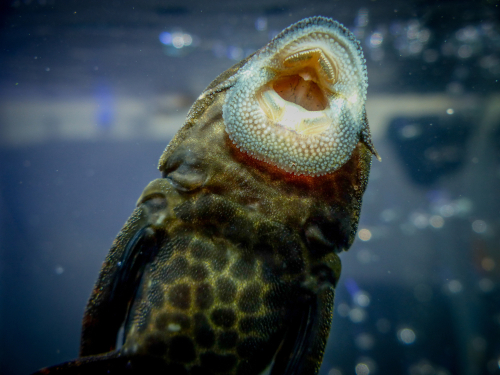
Sucker fish are a group of fish belonging to the order Cypriniformes, primarily known for their distinctive mouthparts. These fish are characterized by their round, downward-facing mouths, which they use to attach themselves to various surfaces.
They inhabit freshwater environments and can be found in rivers, lakes, and other bodies of water. The sucker fish family includes several subfamilies such as Catostomidae and Moxostomatinae.
These vertebrates display a diverse range of sizes, from smaller species measuring just a few inches to larger ones reaching over two feet in length. They typically have elongated bodies adapted to living in fast-flowing waters, providing them with hydrodynamic advantages.
Sucker fish primarily feed on algae, detritus, and small invertebrates, making them essential for maintaining a healthy ecosystem. They often serve as an essential food source for larger predators, such as birds and other fish.
Many species of sucker fish have adapted to specific environmental conditions, allowing them to inhabit diverse habitats across North America, Europe, and Asia.
Even though they are not generally popular in the aquarium trade, sucker fish can exhibit fascinating behaviors and are sometimes sought after by enthusiasts.
Some species of sucker fish, like the common pleco or Hypostomus plecostomus, have become popular in home aquariums for their algae-consuming qualities.
Reproduction in sucker fish is quite varied, with both egg laying and live bearing species. Depending on the species, eggs may be buried in the substrate or attached to plants and rocks, while some livebearers give birth to fully developed fry.
The lifespan of a sucker fish can range from a few years to over a decade, again depending on the species and environmental conditions.
Habitat and Distribution
North America
Sucker fish are commonly found in various freshwater habitats across North America. They primarily inhabit streams and rivers with moderate to fast-flowing currents. These fish can also be found in some lakes and reservoirs.
In their natural habitat, sucker fish prefer clean, oxygen-rich water with a rocky or sandy substrate. They can be found at various depths, often seeking shelter near submerged logs or other structures that provide cover.
In North America, their distribution extends from Canada to Mexico, with a high concentration in the Great Lakes region and the Mississippi River basin.
China
In China, sucker fish species such as Myxocyprinus asiaticus, also known as the Chinese high-fin banded shark, inhabit large rivers, primarily the Yangtze River and its tributaries.
The Chinese high-fin banded shark is known for its unique appearance, with a high dorsal fin and a striking black and white banding pattern.
The habitat of these sucker fish species in China consists of swiftly flowing, deep water with rocky substrates. They are generally found in the middle and lower reaches of the Yangtze River, as well as lakes and reservoirs connected to the river system.
Russia
Sucker fish are also present in Russia, particularly in the vast Siberian region. Some species can be found in the waters of the Amur and Lena River basins. The Amur sucker (Catostomus catostomus) is a notable example of a sucker fish species native to Russia.
The preferred habitat for these fish in Russia includes clean, large water bodies such as rivers and lakes. They are often found in areas with moderate to fast currents, abundant vegetation, and hiding places provided by submerged structures or crevices in the rock.
Classification and Types
1. Catostomidae Family
The Catostomidae family, also known as suckers, contains over 78 species classified into 22 genera. These fish are native to North America and eastern Asia.
They have a characteristic ventral sucker-like mouth for scraping food from the bottom of freshwater habitats. Catostomidae are primarily herbivorous or detritivorous.
2. Remoras
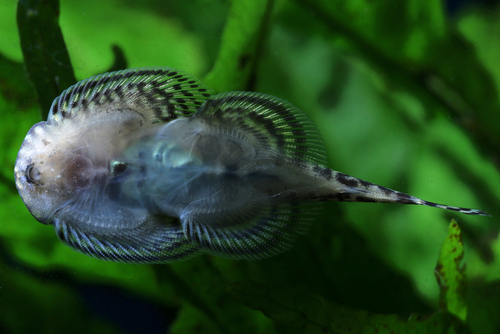
Remoras, belonging to the Echeneidae family, are a unique group of fish that attach themselves to larger marine creatures like sharks, rays, and turtles using their highly developed dorsal fin.
They have a symbiotic relationship with their hosts, feeding on parasites and leftover food, while the host provides protection and transportation.
3. Hypostomus Plecostomus
The Hypostomus Plecostomus, commonly known as the common pleco, is a catfish native to South America known for its algae-eating habits. These fish have a robust, elongated body with a sucker-like mouth, and they are popular with aquarists for their tank-cleaning abilities.
4. Chinese Algae Eater
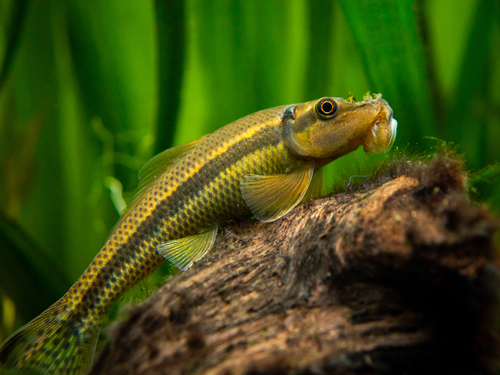
The Chinese Algae Eater, or Gyrinocheilus aymonieri, is a freshwater fish native to Southeast Asia. They are known for their algae-eating abilities and are used in the aquarium trade as efficient tank cleaners.
Despite their name, their diet is not limited to algae, as they also consume other invertebrates and detritus.
5. Bristlenose Pleco
The BristleNose Pleco, or Ancistrus spp., is a small catfish that belongs to the Loricariidae family. Native to South America, the species is notable for its bristle-covered face. It is a hardy, low-maintenance fish that excels at consuming algae in home aquariums.
6. Siamese Algae Eater
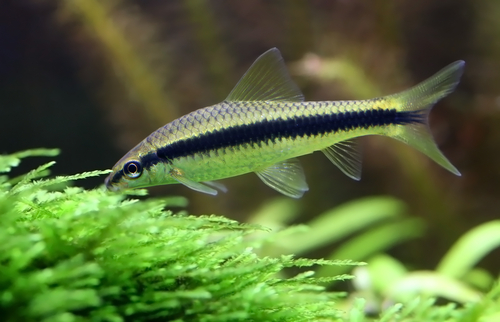
The Siamese Algae Eater (Crossocheilus spp.) is a freshwater fish native to southeast Asia. They are best known for their algae-eating abilities, but they also eat other types of vegetation, crustaceans, and insects. Their peaceful nature makes them suitable for community aquariums.
7. Zebra Pleco
The Zebra Pleco (Hypancistrus zebra) is a small, strikingly beautiful catfish native to Brazil. These fish have a distinct black and white striped pattern, which is where they get their name. They are primarily carnivorous, consuming both invertebrates and carrion.
8. Sailfin Plecostomus
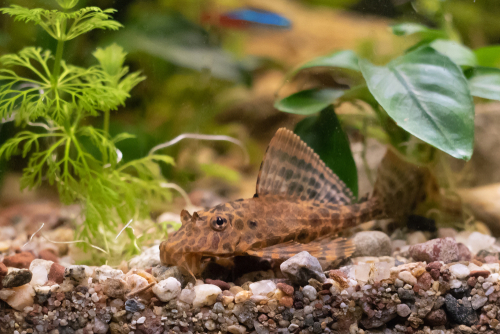
The Sailfin Plecostomus (Pterygoplichthys spp.) is a large catfish, native to South America, with an elaborate dorsal fin resembling a sail. They are omnivorous, consuming algae, plants, and smaller animals, making them a popular choice for aquarium owners looking for efficient tank cleaners.
9. Trinidad Plecostomus
The Trinidad Plecostomus (Hypostomus punctatus), also known as the spotted pleco, is a species of armored catfish native to Trinidad and Tobago.
They are omnivorous fish that feed primarily on algae and plant material, with their large sucker-like mouths making them efficient in removing algae from surfaces in aquariums.
Physical Characteristics
Mouth and Lips
Sucker fish are known for their unique mouth and lip features. They possess specially adapted round, suckermouths that enable them to attach themselves onto various surfaces.
Their fleshy, large lips are designed to create a powerful suction force, which assists them in feeding on algae and other debris. These lips also help the fish hold on to surfaces in fast-moving waters, making them highly adapted to their environments.
Dorsal Fin

A prominent feature of sucker fish is their dorsal fin, which is essential for stability and maneuverability. The dorsal fin is usually unpaired and single, offering them support and enabling smooth movement in their aquatic environment.
The fin is typically triangular or subtriangular in shape and locates on the fish’s back, assisting them while swimming against strong currents.
Body Color
Sucker fish exhibit a range of body colors and patterns that vary by species. Generally, they possess flat bodies with earthy hues such as brown, green, or gray to provide perfect camouflage within their environment.
Some species may display lighter or darker shades depending on their specific habitats. These color variations help the fish blend in with their surroundings, offering protection from predators and aiding in their stealthy approach to feeding on algae and other small organisms.
In summary, sucker fish have several distinctive physical characteristics that equip them to thrive in their aquatic habitats. Their unique mouth and lips enable them to attach themselves to surfaces, while their dorsal fin provides stability and maneuverability when navigating their environment.
Moreover, their body colors and patterns offer excellent camouflage from predators, ensuring their survival and ability to feed undisturbed.
Diet and Eating Habits
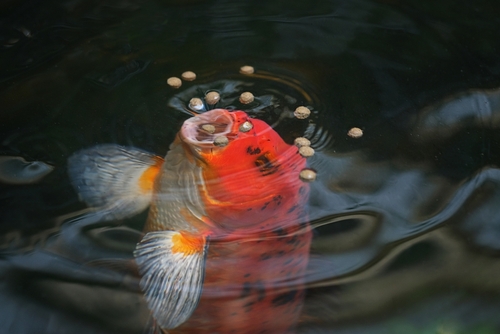
Algae and Plant Matter
Sucker fish, also known as algae eaters, predominantly include algae and plant matter in their diet. They tend to graze on algae growth or biofilm on surfaces within their aquatic environments.
Some species prefer hair algae, while others consume diatoms and other microscopic algae. In addition to algae, they also consume various types of plant matter, breaking down and digesting the nutrients contained within.
Invertebrates
Invertebrates also form a crucial part of the sucker fish’s diet. These fish feed on insects, larvae, and other small invertebrates that they can find in their environments.
By doing so, they ensure a balanced diet and intake of essential nutrients. Sucker fish have adapted to find protein-rich sources, helping them maintain their overall health and energy levels.
Other Food Sources
While algae and invertebrates form the core of their diet, sucker fish have been known to consume other food sources occasionally. They typically feed on sinking pellets, which provide a great source of nutrients catered for their needs.
These fish may also consume leftover food from other fish in their environment. Nonetheless, it is important to provide a primary source of algae and plant matter for their well-being and optimal growth.
Role as a Bottom Feeder
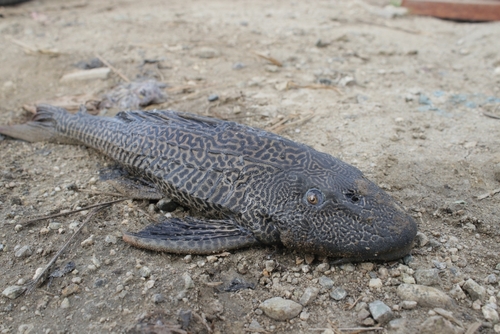
Suckermouth catfish, commonly referred to as sucker fish, are a class of bottom-dwelling fish that serve important roles in their ecosystems. As bottom feeders, they are primarily responsible for consuming and breaking down decaying organic material, assisting in the recycling of nutrients within aquatic environments.
These fish are equipped with a specialized mouth structure that allows them to effectively feed on detritus, algae, and other debris found on the bottom of rivers, lakes, and ponds.
The suckermouth feature is designed to create a strong suction, assisting in the fish’s extraordinary ability to clean surfaces. While feeding, their layers of bony plates protect them from potential predators in the depths of the water.
In maintaining cleaner and healthier aquatic ecosystems, sucker fish play a crucial role in controlling the growth of algae. Their feeding habits prevent excessive algae accumulation that could otherwise lead to deterioration of the water quality and ecosystem imbalance.
Additionally, by consuming leftover food and waste materials, they help regulate the overall oxygen levels in their habitats.
Not only do bottom feeders contribute to maintaining a balanced ecosystem, but they also provide a valuable resource for the fishing industry and aquarium hobbyists.
Many suckermouth catfish species, such as the Plecostomus, are popular additions to aquariums due to their unique appearance and ability to keep the tanks clean.
Life in an Aquarium
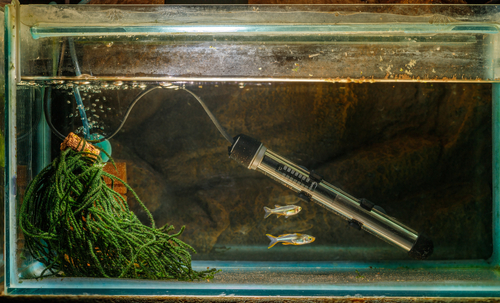
Aquarium Setup
When setting up a tank for sucker fish, it is essential to consider the size of the fish. A minimum of a 20-gallon aquarium is recommended for most species.
Sucker fish, such as the common pleco, can grow quite large and will require additional space as they mature. Providing a proper environment with hiding spots, like driftwood, and plants will help keep the sucker fish comfortable and feel secure.
Ensure the temperature, pH, and water parameters are suitable for the chosen species. Most sucker fish prefer slightly acidic to neutral water conditions, and the aquarium should be well-filtered to maintain clean and oxygen-rich water.
Tank Mates
When selecting tank mates for sucker fish, it’s important to consider the specific species and their compatibility. In general, sucker fish like plecos are peaceful fish and can be housed with other calm, community fish.
Since many sucker fish are nocturnal, it’s a good idea to have a mix of day and nighttime active tank mates to reduce competition for food and swimming space. Suitable tank mates for sucker fish could include:
- Small to medium-sized community fish
- Corydoras
- Tetras
- Other peaceful, non-aggressive species
Keep an eye on the interactions between the sucker fish and its tank mates. If any fish are showing signs of aggression or stress, take appropriate steps to rectify the situation.
Maintaining Cleanliness

A key aspect of maintaining a healthy aquarium for sucker fish is ensuring the tank remains clean. Regular maintenance should include water changes, monitoring water parameters, and removing any uneaten food or debris.
Many aquarists appreciate sucker fish for their algae-cleaning abilities, but it’s important not to solely rely on them for tank cleaning.
While sucker fish can help control algae growth by consuming it from surfaces, their diet must be supplemented with other food sources such as:
- Algae wafers
- Fresh vegetables (zucchini, cucumber, lettuce)
- Occasional protein-based treats (bloodworms, brine shrimp)
By taking the necessary steps toward creating a suitable environment, finding compatible tank mates, and maintaining cleanliness, aquarists can ensure their sucker fish thrive in their aquarium habitats.
Life Span
Sucker fish, commonly known as plecostomus or plecos, are known for their unique ability to attach themselves to various surfaces using their specialized mouthparts.
These fascinating creatures exhibit a life span that can vary depending on the species, environmental conditions, and care provided in captivity.
In the wild, the life expectancy of sucker fish ranges between 10 to 15 years. This is mainly attributed to the availability of suitable habitat, ample food resources, and lack of predators.
However, it is important to note that some species may live for shorter or longer periods depending on their specific biogeographical attributes.
When kept as pets in aquariums, the life span of sucker fish may be reduced to some extent. The most common factors influencing their longevity in captivity include inadequate tank size, poor water quality, inappropriate diet, and a lack of proper hiding spots.
With proper care and attention to these factors, it is possible to maintain the health of sucker fish and prolong their life to match or even exceed their natural life span.
In order to ensure a long and healthy life for sucker fish in captivity, the following practices should be adhered to:

- Tank size: Provide an adequately sized tank for the species of sucker fish being kept. This will ensure enough space for them to swim, forage, and exhibit natural behaviors.
- Water quality: Maintain proper water quality by monitoring parameters such as temperature, pH, and ammonia levels. Regular water changes and filtration maintenance are key.
- Diet: Offer a well-balanced diet that includes both plant-based and protein-rich foods, aligning with the dietary needs of the specific species.
- Hiding spots: Create hiding spots within the aquarium using plants, driftwood, or other aquarium-safe decorations to provide shelter and help reduce stress for the sucker fish.
By adhering to these guidelines and closely monitoring the health of sucker fish, it is possible to provide them with a comfortable and nurturing environment, potentially allowing them to live up to or beyond their average lifespan in the wild.
Spawning and Reproduction
The process of spawning in sucker fish, such as the white sucker and redhorse, is an interesting aspect of their life cycle. Spawning usually occurs in the spring, with the specific timing varying between species and geographic locations.
Water temperature plays a vital role in triggering the spawning process; it is typically initiated when temperatures reach around 10-15°C (50-59°F).
During spawning, both male and female sucker fish migrate upstream to find suitable habitats. The ideal spots are shallow, rocky areas with a moderate water flow. The rocky substrates provide an ideal setting for the deposition and fertilization of eggs.
Males tend to arrive at the spawning ground earlier than females. Upon arriving, females attract the attention of potential mates by displaying their colorful, swollen abdomens. Males often compete with each other and try to outperform their rivals to win over the female’s approval.
Once paired, the female and male fish swim close together, side by side, while they release eggs and milt (sperm) simultaneously. This synchronized process maximizes the chances of fertilization.
The number of eggs laid by a female depends on the species and their size. In general, larger females tend to produce more eggs than their smaller counterparts.
The eggs are adhesive, allowing them to stick to the rocky substrate and avoid being swept away by currents. The fertilized eggs then incubate for about one to two weeks, depending on the species and water temperature.
Upon hatching, the larvae of sucker fish remain attached to the substrate for a few days, consuming their yolk sacs for nourishment. Once the yolk sacs are depleted, they are ready to swim independently and forage for food.
After hatching, the larvae gradually develop into juveniles and then into adult sucker fish. The growth and maturation rates of sucker fish differ between species and food availability.
The spawning and reproduction process of sucker fish, including white suckers and redhorse, is a fascinating and complex phenomenon. With seasonal migrations, strategic mating behaviors, and specific habitat requirements, these fish continue their life cycle with resiliency and adaptation.
Interaction with Other Species

Sucker fish, commonly known as “suckers,” interact with a variety of other species in their natural habitats. As bottom dwellers, they share their environment with a diverse group of organisms and play a critical role in the ecosystem.
Fish:
In freshwaters, sucker fish mainly coexist with game fish species such as trout, bass, and walleye. Although these game fish do not typically prey on adult suckers, they may consume juvenile or smaller species.
Carp, minnows, and other bottom-feeders also share the habitat with sucker fish, making them both competitors and potential prey.
Sharks:

While sucker fish usually don’t encounter sharks in their natural habitats, some marine varieties of suckers can occasionally be found in brackish waters. In these rare instances, sharks might see them as a potential food source, preying on vulnerable or injured sucker fish.
Birds and Reptiles:
Sucker fish are frequently targeted by birds such as herons and egrets, which stalk shallow waters for easy prey. Reptiles such as turtles and water snakes also find sucker fish to be an appealing meal.
The presence of sucker fish in a body of water can attract a diverse array of predatory birds and reptiles, contributing to the overall biodiversity of the area.
Fishing:
Due to their adaptability and abundance, sucker fish are often used as live bait by anglers targeting larger species. Moreover, they play an essential role in maintaining the health of the ecosystem by consuming aquatic plants, algae, and detritus.
This behavior helps keep waters clean and clear, benefiting other fish and organisms that thrive in those conditions.
Role in the Ecosystem
Sucker fish play a significant role in the ecosystem. They interact with various species in their surroundings and contribute to the overall balance of the aquatic environment.
Predators
Sucker fish fall prey to several predatory species. A common predator of the sucker fish is the bigmouth buffalo, a large freshwater fish that is native to the central and western United States.
The bigmouth buffalo fish is an opportunistic feeder that uses its suction-like mouth to feed on a wide variety of prey, including sucker fish. Other predators of sucker fish include larger piscivores, such as pike or muskie, and even some bird species like herons and ospreys.
Prey

Sucker fish are primarily omnivorous, feeding on a wide range of food sources. Their diets include:
- Aquatic insects: Sucker fish consume a variety of aquatic insects, including larvae and nymphs.
- Small invertebrates: They also eat smaller invertebrates, such as snails, crayfish, and freshwater shrimp.
- Algae and detritus: Sucker fish use their suction mouths to scrape algae and other organic matter from rocks and other submerged surfaces, which is a crucial aspect of their feeding behavior.
The Unsung Virtues of the Yellow Sucker Fish
The Yellow Sucker Fish—a staple in many aquariums, primarily known for keeping the tank algae-free. But trust me, there’s more to these fascinating creatures than just their cleaning skills.

Here, we pull back the curtain on the unsung merits and quirks of this remarkable fish.
- Navigating the Taxonomic Maze
When delving into fishkeeping, a common misconception is labeling any algae-eater with a sucker mouth as simply a “sucker fish.” However, the reality is a bit more nuanced. The Yellow Sucker Fish typically falls under the broader Loricariidae family, where the well-known ‘Plecostomus’ or ‘Pleco’ serves as a classic example. It’s crucial to understand that not all Plecos are Yellow Sucker Fish, and their specific needs can vary significantly.
- Lifespan and Size: A Long-Term Commitment
One often-overlooked detail is their potential lifespan. These little guys can live up to 15 years, sometimes even longer with proper care. And let’s not forget about size—some species can outgrow their juvenile size to well over a foot long. It’s something you don’t want to realize too late, especially when planning tank space.
- Beyond Algae: The Versatile Diet
Yellow Sucker Fish are primarily celebrated for their algae-eating prowess, but in reality, they’re omnivores. Their natural diet ranges from detritus to small insects and even wood for some species. A diet comprising solely algae isn’t enough. From my experience, supplementing their diet with sinking pellets and vegetables makes for a healthier, happier fish.
- The Intricacies of Breeding:
Certain Yellow Sucker Fish have some pretty intriguing reproductive strategies. Males are often the architects and guardians of their nests, typically found in secluded caves. Once the eggs are safely tucked away, the male dutifully fans them with his fins to ensure an oxygen-rich environment.
- Sensitive Yet Hardy: Water Conditions Matter
Despite their seemingly robust exteriors, these fish are more sensitive to water conditions than one might assume. Sudden fluctuations in pH, temperature, or ammonia levels can subject them to undue stress. It’s a reminder to prioritize aeration and maintain stability in the tanks to ensure their well-being.
- The Nightlife of Yellow Sucker Fish:
Even though you might catch them lounging around during the day, these fish are primarily nocturnal. Observing their fascinating nighttime antics can be quite different from their daytime behavior, adding an extra layer of intrigue to their aquatic world.
- Not Just Loners: Understanding Social Dynamics
While they might appear solitary, Yellow Sucker Fish often have complex social hierarchies. Having witnessed a few territorial disputes in aquariums, one can attest that providing ample hiding spaces can be a stress reliever for these captivating cleaners.
Conclusion
Sucker fish are a fascinating group of aquatic creatures that have adapted to various environments by developing specialized physical features and behaviors.
Their unique characteristics, such as sucker-like mouthparts, enable them to attach themselves to other living organisms and objects in their surroundings.
One of the most captivating aspects of sucker fish biology is their ability to form mutually beneficial relationships with host organisms.
By providing cleaning services and reducing the amount of parasites on their hosts, sucker fish foster a cooperative arrangement that benefits both parties involved. These symbiotic interactions illustrate a remarkable example of ecological interdependence.
In the realm of human interest, the sucker fish have also found a place in aquariums and fishkeeping communities. Some species, like the Plecostomus, are highly valued for their algae-eating capabilities, effectively working as natural cleaners that help maintain the water quality in the tank.
Their unique appearance and behavior make them attractive options for those looking to diversify their aquariums.
The study of sucker fish is undoubtedly a vast field, with numerous research opportunities and potential implications for our broader understanding of aquatic ecosystems.
The Yellow Sucker Fish serves as a vivid reminder that even the most common aquatic species offer a rich tapestry of behaviors and needs. By understanding these complexities, we not only enrich our experience but also contribute to a thriving environment for these multifaceted fish.
Frequently Asked Questions
What are some common species of catfish?
There are over 3,000 species of catfish in the world, but some of the most common ones include:
- Channel Catfish (Ictalurus punctatus)
- Blue Catfish (Ictalurus furcatus)
- Flathead Catfish (Pylodictis olivaris)
- Brown Bullhead (Ameiurus nebulosus)
These species can be found in a variety of habitats, from rivers and lakes to reservoirs.
Which animals are known to consume algae?
Various animals are known to consume algae as part of their diet, including:
- Brine Shrimp (Artemia sp.)
- Daphnia (Daphnia sp.)
- Mollusks (Gastropoda and Bivalvia)
- Some species of fish, such as Plecostomus (Hypostomus sp.)
These organisms play an essential role in balancing aquatic ecosystems by keeping algae populations in check.
What is the habitat of river sucker fish?
River sucker fish are typically found in freshwater environments, such as rivers, streams, and large lakes. They prefer habitats with clear water, gravel or sand substrate, and moderate to swift currents. Sucker fish can often be found near underwater structures like rocks, logs, or submerged vegetation.
What are the distinguishing features of yellow sucker fish?
Yellow sucker fish (Hypentelium nigricans) is characterized by its elongated body, small round head, and numbering mouth. As its name suggests, its body color ranges from yellow to olive with darker mottling along the sides. The presence of a complete lateral line and scales on top of the head are also distinguishing features of this species.
How does the presence of sucker fish benefit sharks?
Sucker fish are often found in symbiotic relationships with sharks, attaching themselves to the larger predator with specialized disc-like mouths.
By doing so, they feed on the shark’s dead skin, parasites, and leftover food particles. This benefits the shark by ensuring their skin remains clean and healthy, decreasing the risk of infection.
What factors contribute to the mortality of sucker fish?
Sucker fish can be affected by various factors, causing a decline in populations:
- Habitat degradation or loss due to human activities, such as dam construction or water pollution
- Predation by larger fish or bird species
- Overfishing for consumption or use as bait
- Changes in water temperature or pH levels
These factors can negatively impact the health and survival of sucker fish populations, leading to increased mortality.

Ian Sterling, founder of Fishlab.com, began his aquarium journey over 30 years ago, driven by a deep fascination for fish and their diverse personalities. His website, Fishlab.com, is dedicated to making fishkeeping accessible and enjoyable, offering beginner-friendly guidance, expert insights, and a community for aquarists to connect and share experiences.


